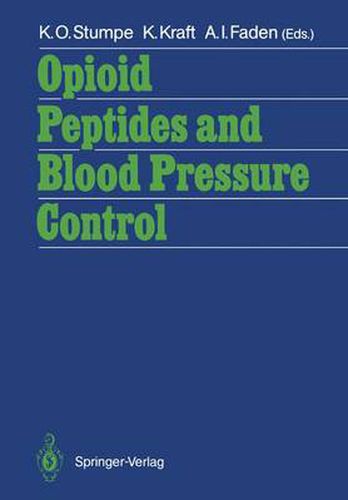Readings Newsletter
Become a Readings Member to make your shopping experience even easier.
Sign in or sign up for free!
You’re not far away from qualifying for FREE standard shipping within Australia
You’ve qualified for FREE standard shipping within Australia
The cart is loading…






This title is printed to order. This book may have been self-published. If so, we cannot guarantee the quality of the content. In the main most books will have gone through the editing process however some may not. We therefore suggest that you be aware of this before ordering this book. If in doubt check either the author or publisher’s details as we are unable to accept any returns unless they are faulty. Please contact us if you have any questions.
A. !, FADEN, K. KRAFr, and K. O. STUMPE Following the discovery of the pentapeptide enkephalins in 1975, a number of endogenous opioid peptides and opiate receptors have been identified. Endogenous opioids and opiate-receptor mechanisms have been implicated in a variety of regulat- ory and dysregulatory functions including analgesia, cardiovascular regulation, shock, hypertension, traumatic spinal cord and brain injury, stroke, immune func- tion, feeding behavior, diuresis, gastrointestinal motility, and respiratory control, among others. Over the past 10 years, many studies have demonstrated a relationship between endogenous opioids and the cardiovascular system under both homeostatic and pathophysiological conditions. Opioids and opiate receptors have been found in various cardioregulatory sites within the brain and spinal cord, as well as in peripheral tissues such as sympathetic ganglia, adrenal gland, and heart. Both endogenous opioids and exogenous opiates have been shown to produce potent cardiovascular effects following central nervous system or systemic administration. Opiate-receptor antagonists have been demonstrated to reverse hypotension from sepsis, hypo- volemia, and anaphylaxis; such studies have been used to infer activity of endogenous opioid systems in shock. Changes in tissue concentrations of endogenous opioids and! or opiate receptors have been found after shock and hypertension, further implying a role for opioid systems in the etiology of these conditions. In addition, modification of opiate receptor regulation, receptor binding, or opioid metabolism has also been used to establish a potential role for endogenous opioid systems in cardiovascular control and dyscontrol.
$9.00 standard shipping within Australia
FREE standard shipping within Australia for orders over $100.00
Express & International shipping calculated at checkout
This title is printed to order. This book may have been self-published. If so, we cannot guarantee the quality of the content. In the main most books will have gone through the editing process however some may not. We therefore suggest that you be aware of this before ordering this book. If in doubt check either the author or publisher’s details as we are unable to accept any returns unless they are faulty. Please contact us if you have any questions.
A. !, FADEN, K. KRAFr, and K. O. STUMPE Following the discovery of the pentapeptide enkephalins in 1975, a number of endogenous opioid peptides and opiate receptors have been identified. Endogenous opioids and opiate-receptor mechanisms have been implicated in a variety of regulat- ory and dysregulatory functions including analgesia, cardiovascular regulation, shock, hypertension, traumatic spinal cord and brain injury, stroke, immune func- tion, feeding behavior, diuresis, gastrointestinal motility, and respiratory control, among others. Over the past 10 years, many studies have demonstrated a relationship between endogenous opioids and the cardiovascular system under both homeostatic and pathophysiological conditions. Opioids and opiate receptors have been found in various cardioregulatory sites within the brain and spinal cord, as well as in peripheral tissues such as sympathetic ganglia, adrenal gland, and heart. Both endogenous opioids and exogenous opiates have been shown to produce potent cardiovascular effects following central nervous system or systemic administration. Opiate-receptor antagonists have been demonstrated to reverse hypotension from sepsis, hypo- volemia, and anaphylaxis; such studies have been used to infer activity of endogenous opioid systems in shock. Changes in tissue concentrations of endogenous opioids and! or opiate receptors have been found after shock and hypertension, further implying a role for opioid systems in the etiology of these conditions. In addition, modification of opiate receptor regulation, receptor binding, or opioid metabolism has also been used to establish a potential role for endogenous opioid systems in cardiovascular control and dyscontrol.